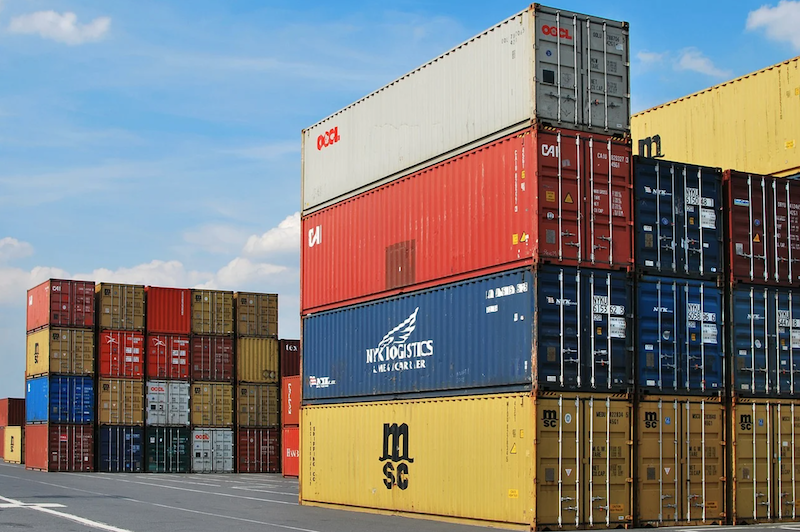Freight Derivatives


Freight derivatives include container freight swap agreements, container freight derivatives, physical deliverable freight derivatives, forward freight agreements (FFA), and other derivatives based on these.
Forward Freight Agreement (FFA)
A Forward Freight Agreement, or FFA, is a contract between two parties to buy or sell goods at a future date and price.
FFAs are often used to hedge the price risk of physical commodities by locking in a price for the sale or purchase of a commodity at a predetermined future date.
An FFA can be based on the underlying spot market price of the commodity, or it can be based on an index such as the popular Baltic Dry Index (commonly referred to as the BDI).
FFAs became popular in the early 2000s when prices began to rise and companies wanted to lock in prices for the future rather than risk future increases.
Companies started using FFAs as futures contracts that locked in a fixed price where they could buy or sell the commodity.
For example, a grains or agricultural house might agree to purchase corn twelve months later at $5/bushel and look to enter into an FFA.
As long as the spot price of corn is between $4 and $6 per bushel throughout those twelve months, both entities will work under this contract and complete this transaction.
If prices go above $6 during those twelve months, then there is no need for either party to fulfill their responsibility. This is because it would be more profitable for them to use another contract on the open market rather than proceed with the current transaction.
FFAs differ from futures because they aren’t directly tied to a commodity that’s trading on an exchange or another market. Rather, they’re based on prices within the shipping sector of certain commodities, including products like oil and dry bulk cargoes.
Other freight derivatives
These financial arrangements are used as it pertains to tankers, containerships, dry bulk carriers, and freight rates.
Freight derivatives are commonly settled against various freight rate indexes that are published by the Baltic Exchange (for Dry and most Wet contracts) and various others globally (e.g., Shanghai Shipping Exchange, Platt’s).
Forward freight agreements are typically traded OTC through broker members of the Forward Freight Agreement Brokers Association (FFABA).
More trading has gone toward electronic exchanges over the years.
There are five clearinghouses for freight:
- NASDAQ OMX/NOS Clearing
- EEX
- SGX
- ICE Futures Europe
- CME Clearport
The Shanghai Shipping Freight Exchange (commonly known as SSEFC) is an electronic exchange. It is the first electronic shipping freight exchange globally.
The SSEFC has three main lines of businesses, including International Dry Bulk, Domestic Coastal Coal, and International Container.
Its container freight derivatives are the most liquid contracts globally in that particular product. They were established in 2011.
In 2012, they launched coal contracts. In 2014, they launched the world’s first physical deliverable shipping capacity contract.
Freight derivatives are most commonly used by oil companies, trading companies, shipowners and operators, oil companies, and agricultural companies as instruments for managing freight risk.
And with the way commodities and international trade make up a large part of macroeconomics, large financial institutions, including hedge funds and banks, are now also part of the freight derivatives market.
Trading volumes in dry freight derivatives increased as those involved in the freight and shipping industries needed tools to contain their risks. Moreover, banks and hedge funds looked to earn profits from trading these markets. Trading volumes in forward freight agreements are more than the actual physical product.
Baltic Dry Index
The Baltic Dry Index is used to measure the cost of shipping various types of commodity goods.
The Baltic Dry Index is reported each day by the Baltic Exchange in London.
The index provides a reasonable benchmark for the price of moving major raw materials by sea. The index is made up of three sub-indexes that measure different sizes of dry bulk carriers:
- Capesize, which usually transports iron ore or coal cargoes of about 150,000 tonnes
- Panamax, which typically carry coal or grain cargoes of about 60,000 to 70,000 tonnes, and
- Supramax, with a carrying capacity between 48,000 and 60,000 tonnes.
The Baltic Dry Index looks at 23 different shipping routes carrying iron ore, grains, coal, and many other commodities.
The index makes it viable to compare costs between transporting different types of cargo across the world. This means it can facilitate risk management among companies that have exposure to the global markets for raw materials.
As the Baltic Dry Index was becoming more widely used as a risk management tool, policymakers became concerned about its potential outsized role in financial markets.
The index fell by 98 percent due to the global economic recession of 2008.
Baltic Exchange (BALTEX)
The Baltic Exchange is a non-profit business association based in London, which focuses on the shipping industry.
They publish indexes such as the Baltic Dry Index and provide news and information of interest to those within the freight derivatives market.
BALTEX’s membership base is comprised of shipowners and operators carrying dry cargo on crude oil tankers and other bulk carriers involved in all areas of international trade: liner trades; tramp trades; contract markets; financing and chartering services; brokers/intermediaries providing central counterparty risk management facilities via access to the world’s largest open platform for the trading of freight derivatives.
The Baltic Exchange also provides courses and exams on shipping and freight trading.